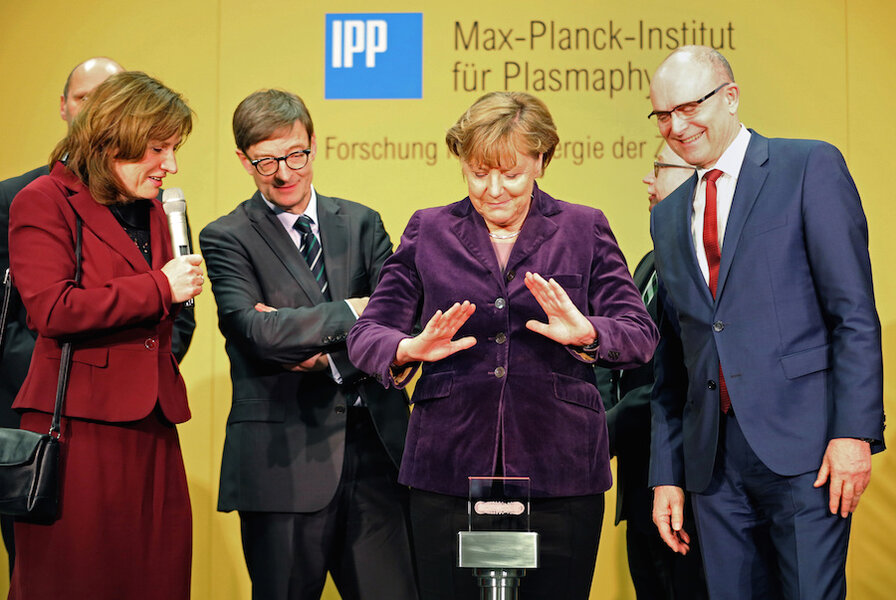How Germany took big step toward nuclear fusion
Loading...
Nuclear fusion power has been the dream of many since the 1950s and on Wednesday German scientists took one step closer to making it possible.
German scientists at the Max Planck Institute in Greifswald, joined by German Chancellor Angela Merkel, injected hydrogen into the Wendelstein 7-X fusion device and heated the gas into plasma for a moment, according to the press release.
The device will not produce energy from the plasma, but the experiment is the first of many that could prove whether the design is capable of being used as a power plant. If so, it could answer one of the many questions surrounding nuclear fusion.
“With a temperature of 80 million degrees and a lifetime of a quarter of a second, the device’s first hydrogen plasma has completely lived up to our expectations,” Hans-Stephan Bosch, whose division works on the Wendelstein 7-X, said the press release.
Two different designs for fusion power plants have shown promise: the tokamak, such as the International Thermonuclear Experimental Reactor being constructed in France, and the stellarator. The Wendelstein 7-X is the world's largest stellarator.
Only the ITER project, a tokamak, is thought to be able to produce plasma that supplies energy, according to the press release. The experiments begun Wednesday could prove that stellarator designs could produce comparable heat- and plasma-confinement.
Scientists working on the Wendelstein 7-X will perform similar experiments, heating gas to plasma and holding it in stasis, over the next four years, slowly increasing the temperature and the time of the discharges, according to the press release.
Eventually, in about four years, the Wendelstein 7-X will test its full heating power (20 megawatts) and discharges lasting 30 minutes. If successful, it would show a large advantage over tokamaks. Stellarators can work continuously, whereas tokamaks work only in pulses.
The initial phase of experiments with discharges lasting only moments, like today, will continue until mid-March before increasing.
"The impressive results obtained in the startup of the machine were remarkable," David Anderson, a professor of physics at the University of Wisconsin, told CBS News over email. " W7-X is a truly remarkable achievement and the worldwide fusion community looks forward to many exciting results."
Nuclear fusion is seen as a safe, efficient form of nuclear power and has been proposed as an eventual replacement for oil and fossil fuels, according to the press release.
But critics have pointed to the mounting cost of a technology that is still under development and likely remain unavailable for decades. Investments for the Greifswald fusion device have surpassed €1 billion over the last 20 years, CBS News reported.
The ITER project recently announced in November that it would take six years longer to construct than previously thought and would require additional funding from the €5 billion estimate in 2006. Science reports current estimates place the ITER project needing €15 billion.
Chancellor Merkel, who has a doctorate in physics, spoke of the necessity of nuclear fusion for Germany, after she personally pressed the button to begin the experiment at Greifswald.
"As an industrial nation we want to show that an affordable, safe, reliable and sustainable power supply is possible, without any loss of economic competitiveness," she said, according to CBS News. "The advantages of fusion energy are obvious."








